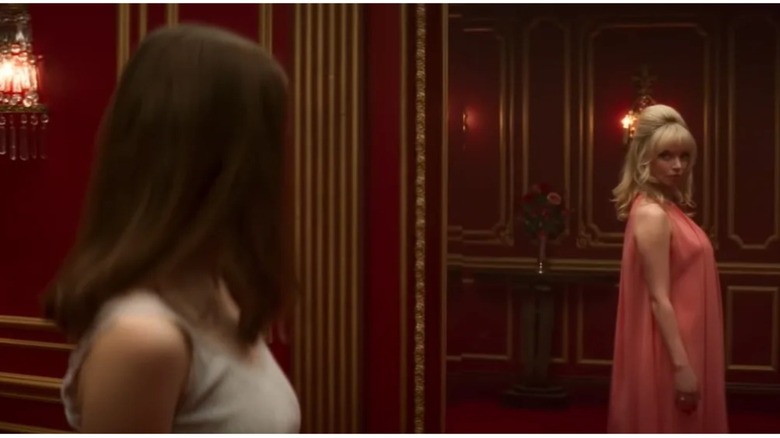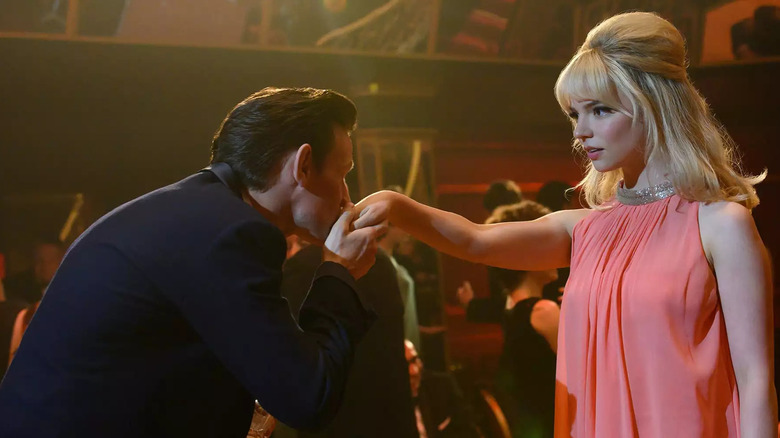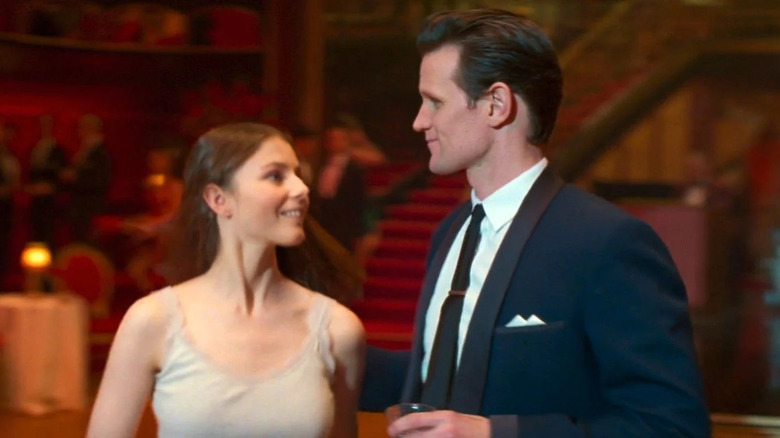
Edgar Wright's "Last Night in Soho" was a polarizing movie. I leaned on the positive side, but sometimes felt it bit off more than it could chew. Where I find no fault is in the film's performances and visuals. Chung-hoon Chung makes any movie he shoots better, and while Wright's script sometimes falters, his direction never wavers.
The scenes replicating the 1960s are the most beautiful -- in particular, there's a dance shared by Jack (Matt Smith) and Sandie (Anya-Taylor-Joy), with a time-displaced Eloise (Thomasin Mckenzie) sometimes stepping in for the latter. Impressively, Wright pulled this scene off not with digital magic, but with good old-fashioned camera movement and blocking.
Carefully Planned Choreography

Mirrors are a motif throughout "Last Night In Soho." During the flashbacks, whenever Eloise looks at her reflection, she sees Sandie staring back at her. These images reflect the film's themes of identity, and specifically how Eloise sees in Sandie the person she wants to be. The shots of the mirrored girls were accomplished with a very simple technique: putting the actresses next to each other. As Wright explained to Polygon, "They're actually standing next to each other, for the most part. When they're very close to each other, what you're watching onscreen is actually what's happening."
What was more complicated was the dance scene. Now, one girl was taking the place of the other, rather than both being onscreen simultaneously. There are a total of six changes throughout the minute-long dance (three from Sandie to Eloise, and three back again). If you watch the scene carefully, you'll notice that all but the first change occur when Sandie or Eloise are briefly out of view -- either one has stepped offscreen, or someone or something is obscuring them. This was done so that during the shoot, Taylor-Joy and McKenzie could trade places back and forth without being seen, creating the illusion of them being one and the same.
Shooting the scene naturally required careful timing from the actors, on top of great attention to camera movement and blocking. Matt Smith recalled (via Polygon):
"We rehearsed with the choreographer, Jen White, fastidiously. We worked very hard to get ourselves free and swaying in that '60s-esque style. A lot of the visual tricks were done with us running around the back of the camera and hiding, and jumping up — trying to run round and not be in the shot, and then come out again and make things work."
The Digital Cheat

There is one editing trick in the dance scene -- namely, the first switch from Sandie to Eloise. Jack twirls Sandie around and when she vanishes behind him for a split second, she re-emerges as Eloise. This change was far too swift to be done practically, so the crew simply shot two takes; one with McKenzie, one with Taylor-Joy. In the editing room, the takes were spliced together to create the switch seen in the final film.
This may seem like a less stressful way of shooting the scene, but continuity is essential for a match cut like this. Smith, Taylor-Joy, and McKenzie's movements still had to be very precise and in tune with each other's. Wright recalled (via Polygon):
"Even when we were doing it, I didn't know we were going to be able to pull it off. And the reason it's so good is because Matt Smith and Anya and Thomasin's continuity is just so dead-on."
As for why the whole scene wasn't shot this way -- Wright wanted the scene to have as few cuts as possible, feeling that (mostly) unbroken take would be more hypnotic. Immersion was vital since the whole point of the dance is that Eloise, Sandie, and the viewer are all being seduced by the charm of the era, personified in Jack. The way "Last Night in Soho" pulls back the 1960s' glitz and glamour to reveal the rotten layers beneath wouldn't have been nearly as effective if audiences hadn't been seduced first.
Read this next: The Best Movies Of 2021
The post Edgar Wright Relied On Practical Magic For Last Night In Soho's Most Complicated Scene appeared first on /Film.

0 Commentaires